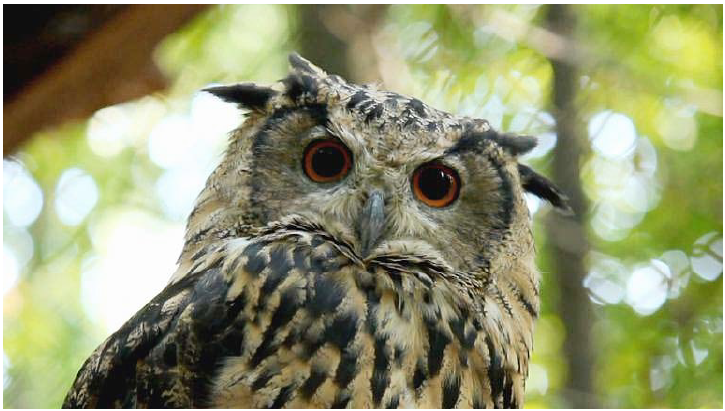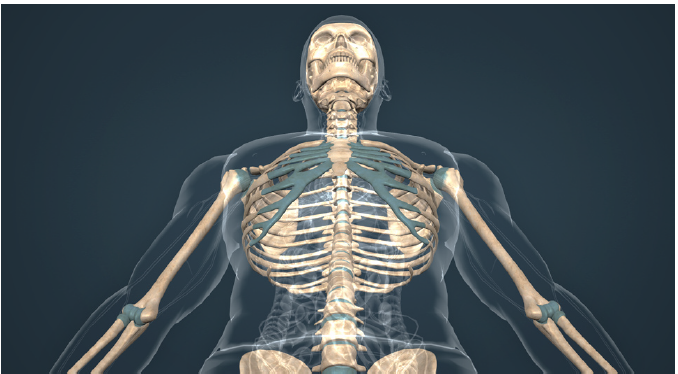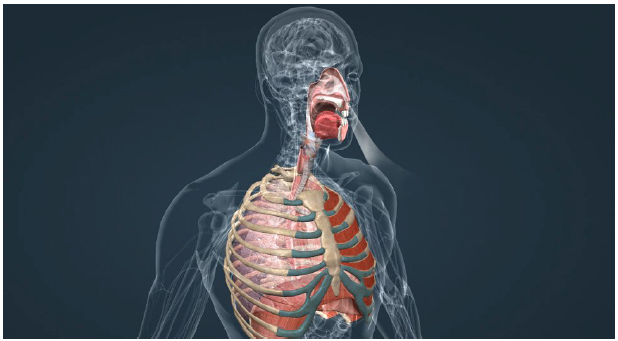Abstract
Within the biology lessons, knowing the secrets of nature by the secondary school and high school students can be realized through direct observation of processes and phenomena in the laboratory or in the natural environment near the school, and with the aid of computer. Interactive presentation of new knowledge by means of an educational software can also be achieved if the interactive electronic board (also called “intelligent/smart board”) is used. The paper will present how to use some 3D models and videos existing on the Platform mozaWeb within the biology lessons. It also proposes the mode of performing a didactic activity within some biology lessons in the secondary school school. Thus, at the 6th grade will be exemplified how to use videos, when applying heuristic conversation and learning through discovery, within some lessons regarding various bird species. At the 7th grade will be exemplified how to use the 3D models at different moments of lessons on the skeletal system and respiratory system, by applying various methods such as observation, heuristic conversation, demonstration, problem solving, etc.
Keywords: Platform mozaWebbiology lessondidactical methodsvideos3D modelsdidactic strategies
Introduction
1.1.Problem Statement and Research Questions
Computer, laptop, tablet and smartphone connected to the Internet, are working tools that can be
used easily at any time by each person who has digital skills. As pointed out by Cojocariu, Lazăr, Nedeff
& Lazăr, “the ability to use a computer connected to a network” “offer the possibility to learn from
anywhere, anytime, in any rhythm, with any means”, existing many terms that designate this as follows:
“online learning, open learning, web-based learning, computer-mediated learning, blended learning, m-
learning” (Cojocariu, Lazăr, Nedeff & Lazăr, 2014).
In educational practice they are considered modern means of teaching that can be used by both the
teacher and student within the educational process conducted typically in classrooms / laboratories
equipped for various school subjects / computer labs, within the education institutions, or in the form of
distance education. Both within the formal and informal education, and in the leisure time, this tools can
be used also as a source of documentation and access to information.
Biology teacher can select and access within the lesson, or only at certain times of it, various
educational software. Some of these are part of the laboratory equipment that can be found in school,
while others can be purchased or used free of charge, from the Internet. The last category include the
electronic manuals and digital materials available on the mozaWeb online platform
(https://www.mozaweb.com). These can be used by both actors in the educational process, both at school
and at home, through one of the working tools mentioned above.
The research results have answered the following questions: What teaching methods could be
applied throughout the biology lesson, where the teacher chooses to use the images or 3D models existing
on the mozaWeb platform? What strategy could choose the teacher to conduct the lesson, when using the
“intelligent/smart board” and various digital materials offered by the online platform mentioned earlier?
1.2.Purpose of the Study and Scientific Objectives
Modernization of education requires change and continuous improvement of methods and means used
in the didactic activity carried out with the students. Given that the computerized information system plays a
crucial role in optimizing the school activity, in our research we were aiming at highlighting how some
videos and 3D models existing on the mozaWeb online platform can be used, by the aid of “intelligent/smart
board”, in the lessons of biology with different themes.
In carrying out the research we considered the following objectives:
identification of some videos and 3D models existing on the mozaWeb online platform, that can be
used both by the teacher, for the understanding and acquiring by the students of the knowledge of
biology planned to be studied in secondary school, and by students, within the study carried out
independently at home;
description of the ways to apply some didactic methods, where the teacher uses the “intelligent board”
for presenting throughout the lesson some digital materials available on the mozaWeb online platform;
proposing some didactic strategies for carrying out some biology lessons, that can be used by the
teacher, when choosing for integration into the lesson of the digital material mentioned above.
Paper Theoretical Foundation and Related Literature
As mentioned by Soare, the new technology “influences the design of educational programs
addressed to individuals in the formal or non-formal contexts where they act and live”. This “favors the
creating of a new context for learning” (Soare, 2013, pp.521-522). The author mentioned above consider
that the learning contexts must be reconsidered and reorganized, and training strategies need to be
rethought and reinvented. Within the biology lessons, knowing the secrets of nature by the secondary school and high school
students can be realized through direct observation of processes and phenomena in the laboratory or in the
natural environment near the school, and with the aid of computer.
When they are used, “computers, servers, software, other technology of information
communication devices”, but also various methods such as “the independent and systematic observation,
the experiment, the simulation, the demonstration, the modelling”, as precisely stated by Ciobanu, within
the lesson is applied a “computerized strategy” (Ciobanu, 2008, p. 121). Taking into consideration the
teaching means (info-biology labs, electronic platforms or special software programs and multi-media
labs), Iancu pointed out the need of carefully selection of methods and didactic tools in such way to
“harmoniously combine traditional approaches with heuristic strategies and multi-media equipment”
(Iancu, 2014, pp. 1500-1503). Iancu warns on the need of alternating teaching activities in which is used
the computer, with other activities in which should be applied techniques specific to biology, so as to
achieve also the “psychomotor objectives of the current curricula” (Iancu, 2015, pp. 76-77).
As mentioned by Lazăr, Măţă, Ifrim, Mateian & Lazăr, educational software and technologies that
are used in the educational process “represent a powerful combination between pedagogical methodology
and information technology and when are used as a support for teaching and learning activities, may
bring to them a deep interactive character” (Lazăr, Măţă, Ifrim, Mateian & Lazăr, 2013, p. 3396).
Among the educational software used for studying biology, produced by specialized companies,
we mention the collection of interactive lessons realized by Siveco Romania, the company that developed
the AeL eLearning platform, the INTUITEXT collection realized by Softwin, and more recently, the
digital materials - text, images, videos and 3D models - existing on the mozaWeb online platform.
The AeL collection of biology lessons is made for 5th-12th grades and may be used only at school,
in the computer lab. The two CD-ROMs that include INTUITEXT collection of lessons can be used for
teaching and learning biology concepts both in the lessons conducted at secondary schooland high
school, and at home, for the individual study. If the “smart/intelligent board” it is used, the teacher can
use a software for the interactive presentation of new knowledge, and the lessons can be held in the
classroom. “The advantages of using this means of teaching, compared to exclusive use of the computer,
consists in the possibility of writing or drawing on the blackboard, using the set of special pencils, as well
as the realization of annotations, comments, additions, even on the document accessed, via markers,
either by the teacher or the student” (Petruţa, 2009, p. 164). In this case, besides the teaching methods
used with ICT (Information and Communication Technologies), can also be used the “heuristic
conversation, debate, problem solving, brainstorming, exercise, explanation” (Petruţa, 2010, p.169).
Methodology
In order to achieve the purpose of our research, we analyzed the content of digital materials provided
by mozaWeb online platform, given the content of biology current programs designed for middle school,
as well as the scientific content of some school texbooks.
Results and Discussion
The computer “help the teacher to teach and the students to learn, but can not ensure complete
substitution of the two main actors of the stage of school” (Stanciu, 20 15,p.141). Taking into
consideration this statement, we will present below the way by which the teacher can use within the
lessons of Biology certain digital materials that he/she can download free of charge from the mozaWeb
online platform, if he/she create an account, using a computer, laptop, tablet or smartphone connected to
the Internet. This way, the teacher and students can analyze certain images, videos, and 3D models before
starting the lesson, they can determine if the content of these teaching/learning tools meets the
requirements of the curriculum and school textbook developed for a particular grade, as well as to those
related to age particularities and individual students. Thus, the teacher can choose the moment when
he/she will integrate in lesson one or more digital materials, using the ‘smart board”, will choose the
teaching methods that he/she will use in that sequence of lesson, and will also decide on how students
will work. In other words, the teacher will select a certain teaching strategy in designing the lesson, which
will be applied subsequently in the process of teaching.
Thus, analyzing the wide range of biology videos existing on the mozaWeb online platform, and
the chapter “Vertebrates” from the textbook designed for 6th grade, we found the possibility of using the
following digital materials when studying the classes of animals:
fish – carp, sharks;
amphibians – lake frog;
reptiles – freshwater turtle, grass snake, etc.;
birds – dove, mallard, pink flamingo, pelican, dark seagull, the great owl, snowy owl, etc.;
mammals – brown bear, pink panda, fallow deer, wolf, wild boar, lion, elephant, giraffe, rhino, gorilla, polar regions fauna, etc.
During the lesson on “Birds of prey”, at 6th grade, after transmission of knowledge regarding
goshawk, the teacher can ask students to pay attention to two videos presented on the “smart board”: the
Eurasian eagle owl (Fig. 1) and the snowy owl (Fig. 2).

(https://www.mozaweb.com/Extra-Videos-The_Eurasian_eagle_owl-210603)

(https://www.mozaweb.com/Extra-Videos-The_snowy_owl-209512)
Next, the class will be divided into three major groups (A, B, C), each one comprising sub-groups
(3-4 students), which will have the same working task. Group A will have to determine similarities and
differences between goshawk and the great owl, Group B will have to indicate similarities and differences
between snowy owl and goshawk, and Group C will have to find the similarities and differences between
the great owl and the snowy owl. Later, after the teacher together with the students will analyze the
answers given by each group, will be addressed the following questions to all students in the class: Why
these birds are called birds of prey? What is the birds of prey feed? What adaptations they presents
correlated to their mode of feeding? What organs are well developed in these birds? Why gizzard is less
developed? Thus, guided by the teacher, the students will discover inductively the general characteristics
of the birds of prey.
To 7th grade, within the lesson on “The bones and joints”, the teacher can use the 3D model
“Human skeleton” (Fig. 3). The lesson can be held into a classroom / computer lab equipped with a
“smart board”.

(https://www.mozaweb.com/Extra-3D_animations-Human_skeleton-123127)
By accessing the icon “skeleton”, the teacher can demonstrate and explain its components to the
students. In the images presented, the students will observe the skull, spine, bones of chest (breastbone, ribs), bones of shoulder girdle (clavicle and scapula) bones of pelvic girdle (hip bones), the upper limb
bones (humerus, radius, and ulna) and lower limb bones (femur, tibia, fibula, and foot bones).
By accessing the icon “Animation” the students can observe the image that can be rotated of the
human skeleton, from the bones of skull to the bones in the foot.
Taking into consideration the fact that students have studied in the 6th grade the type skeleton of a
mammal, they are asked to compare two skeletons, having at their disposal the pad or image taken from
the Internet with the rabbit skeleton. By identifying the bones of the head, chest, spine, bones of both
belts and bones of limb, and comparing their form in both mammals, students will discover by analogy
the existence of the same bones that make up both skeletons, but have certain features.
Next, students will be asked to solve the following situation problem: Given the particularities of
the rabbit and human skeleton, how can you explain that man walks upright on two legs (in vertical
position), and rabbit moves and run in horizontal position? What causes do you consider that have led to
the peculiarities of the human skeleton?
After resolving the situation problem with a help from the teacher, through various helping
questions, will be accessed the icon “Game. Put the bones in place”. The image, that can be rotated,
shows an incomplete skeleton. Near it are placed the missing bones, for example the skull, ulna, humerus,
bones of the chest, spine, femur, bones of the hand, and foot bones. Clicking on a bone among those
mentioned above, it can be moved and placed in their right position in the skeleton. With this game,
students will notice the missing bones and their position in the human skeleton. Once all the bones were
placed correctly, the game resumes, being presented other bones that must be included in the human
skeleton.
If the lesson will be held in the classroom, students can be taken one by one to the “smart board”
and asked to complete the skeleton with the bone whose position is known. If the biology class will be
held in the computer lab, then the students grouped in pairs will solve the tasks of game.
The same procedure can be used for the next game, entitled “Find the bone”. In this case, it is
mentioned the bone, and students will need to click on the appropriate part of that bone in the human
skeleton.
By solving the tasks of these games, the students can acquire knowledge about the human skeleton
both in the classroom and at home. They will learn to evaluate themselves, given that if case of the
correct placement of a bone in the human skeleton, it turns green, confirming the student's correct answer,
and in case of incorrect assembly, it turns red.
During the lesson on “Breathing”, at the 7th grade, the teacher can use the 3D model “Respiratory
system” (Fig. 4) presented by the aid of “smart board”. By accessing the icon “Respiratory system”, the
teacher can demonstrate and explain the way in which the inhalation and exhalation is realized. Carefully
watching the content of the digital material presented, students will observe the respiratory system
components studied in the previous lesson - nasal cavity, pharynx, trachea, larynx and lungs. They will
also observe changes in the volume of chest during inspiration and expiration, and the change of the
diaphragm position, due to its contraction and relaxation during the two processes.

(https://www.mozaweb.com/Extra-3D_animations-Respiratory_system-12049)
Next, the students may be asked to solve the following situation problems:
1.Tetanus causes muscle paralysis, and consequently the suffocation of man. How do you explain
this?
2.Emphysema is a lung disease. Man can inspire, but have difficulty in exhaling. Why?
For students to discover what kind of processes are breathing (respiration) and expiration
(exhalation), the teacher can address the following questions: Knowing that inspiration is achieved by
muscle contraction, and thus with energy consumption, what process is this? But exhalation, which is
achieved by muscle relaxation?
For students to observe the alveolar sacs and gas exchange, the teacher will access one after other
the two icons with these names. The teacher will demonstrate and explain the role of red blood cells in the
transport of respiratory gases.
At the end of the lesson, the teacher can address the following questions: When we yawn (a
prolonged, deep inhalation and sighing or heavy exhalation)? Why we do not yawn during physical
activity? Who intervenes in exhalation? But in forced exhalation? Responding to questions, the students
will understand that people yawn due to the insufficient oxygen going to the brain, and accordingly the
yawning is like a forced inspiration, during the expiration intervening the abdominal muscles in addition
to the elasticity of lungs.
Conclusions
During the biology lessons held within the frameworks of 6th and 7th grade classes, by using the
“smart/intelligent board”, may be used numerous videos and 3D models offered free by the mozaWeb
online platform. These can be accessed both at school and at home, for the individual training of teacher
and student, using a computer, laptop, tablet or smartphone connected to the Internet. In designing the
lessons, the teacher may choose different teaching strategies, in which to use, in addition to the digital
materials mentioned, teaching methods that require the students to learn through their own effort, such as:
observation, discovery learning, problem solving, conversation. Also, the activity may be carried out with
the entire class of students, in groups or individually. By the attractiveness of digital materials existing on
this platform, by their color, sound, and mode of presenting information, we think that they can be
successfully used in teaching, when they are presented on the “intelligent board”.
References
- Ciobanu, M.(2008). Teaching Biological Sciences. Bucharest: Didactical and Pedagogical Publishing
- House
- Cojocariu, V.M., Lazăr, I., Nedeff, V, Lazăr, G. (2014). SWOT anlysis of e-learning educational services from the perspective of their beneficiaries. Procedia - Social and Behavioral Sciences, 116, 1999-2003. doi: 10.1016/j.sbspro.2014.01.510 Iancu, M. (2014). Assessing the role of new information and communication technologies (I.C.T.) in the potentiation of the didactical methodologies applied in the study of biological disciplines.
- Procedia - Social and Behavioral Sciences, 180, 1498-1506. doi: 10.1016/j.sbspro.2015.02.298 Iancu, M. (2015). Bioethical education in teaching Biology. Procedia - Social and Behavioral Sciences, 127, 73-77. doi: 10.1016/j.sbspro.2014.03.215 Lazăr, I., Măţă, L., Ifrim, I., Mateian, C., Lazăr, G., (2013) Integrated teaching and learning methods in environmental sciences using interactive ceramic whiteboards with integrated sound (eno) and spark science learning sistem, EDULEARN13 Proceedings,5th International Conference on Education and New Learning Technologies. Barcelona. Spain, 3396-3402. Retrieved from https://www.researchgate.net/.../279848748 Petruţa, G. P. (2009). Lectures of Biological Science Didactics. Piteşti: University Publishing House. Petruţa, G. P. (2010). Lectures of Biological Science Didactics (2rd ed.). Piteşti: University Publishing House.
- Soare, E.(2013). Designing the educational context in e-learning era. The 9th International Scientific
- Conference eLearning and software for Education, 1, 521-526. doi: 10.12753/2066-026X/13/084
- Stanciu, M. (2015). The theory of instruction and evaluation. Iaşi: Ion Ionescu de la Brad Publishing
- House.
- https://www.mozaweb.com https://www.mozaweb.com/Extra-Videos-The_Eurasian_eagle_owl-210603 https://www.mozaweb.com/Extra-Videos-The_snowy_owl-209512 https://www.mozaweb.com/Extra-3D_animations-Human_skeleton-123127 https://www.mozaweb.com/Extra-3D_animations-Respiratory_system-12049
Copyright information

This work is licensed under a Creative Commons Attribution-NonCommercial-NoDerivatives 4.0 International License.
About this article
Publication Date
25 May 2017
Article Doi
eBook ISBN
978-1-80296-022-8
Publisher
Future Academy
Volume
23
Print ISBN (optional)
-
Edition Number
1st Edition
Pages
1-2032
Subjects
Educational strategies, educational policy, organization of education, management of education, teacher, teacher training
Cite this article as:
Petruţa, G. (2017). Methodological Issues Concerning the Use of Smart Board within the Biology Lessons. In E. Soare, & C. Langa (Eds.), Education Facing Contemporary World Issues, vol 23. European Proceedings of Social and Behavioural Sciences (pp. 978-985). Future Academy. https://doi.org/10.15405/epsbs.2017.05.02.120
